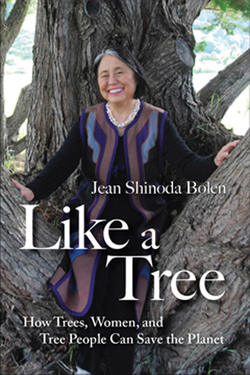Читать книгу Like a Tree - Jean Shinoda Bolen - Страница 11
На сайте Литреса книга снята с продажи.
Two Kinds of Trees
ОглавлениеMy tree was a conifer (conifer means “cone-bearing”), in the tree family lineage that began 290 million years ago. Conifers are familiar trees, known to us as firs, spruces, pines, cedars, redwoods, cypress, podocarps, yews, and junipers. They originated in and continue to survive in poor soil, with extremes of weather from tropical to desert, to almost arctic. Among the conifers in California are coast redwoods, the tallest trees in the world, and the bristlecone pines, which are the oldest. They comprise the vast boreal forests in Alaska, Canada, Scandinavia, Russia, and Siberia. They thrive in places where conditions are difficult, including in areas where fires are common. They are survivors and pioneers—trees that move into devastated areas and grow where other trees do not.
The conifers are one of the two large tree categories that make up 99 percent of all trees: trees without flowers (conifers) and trees with flowers (the angiosperms). Angiosperms differ from conifers in their sexuality. The female ovule is completely enclosed within the ovary, and the male gamete must be carried to it via pollen tubes. Uniquely, angiosperms practice double fertilization. This is a very brief summation; left out are definitions and explanations, the various means of union and procreation, and how this contrasts with conifers. Suffice it to note that the obstetrics and gynecology of the two categories differ. The angiosperms are a huge universe of flowering plants (300,000 species), among which there are trees. The surmise is that flowering trees with woody trunks evolved from flowering plants, with missing links. Also not known are when, where, and how angiosperms originated.
Broadleaf trees are angiosperms: they include acacia, maple, elder, baobab, alder, aralia, birch, hickory, hawthorn, laurel, eucalyptus (gum), linden, olive, beech, banyan, fig, sycamore, ash, locust, mulberry, plane, coffee, holly, poplar, aspen, oak, willow, pepper, elm, and many others. Fruit trees, nut-bearing trees, and flowering trees are also angiosperms. There are about fifty times more species of flowering trees than of conifers. They usually grow where the soil is good or adequate, in temperate zones where the weather has predictable seasons, or in the vast tropical forests of the Amazon, central Africa, or Indonesia.
